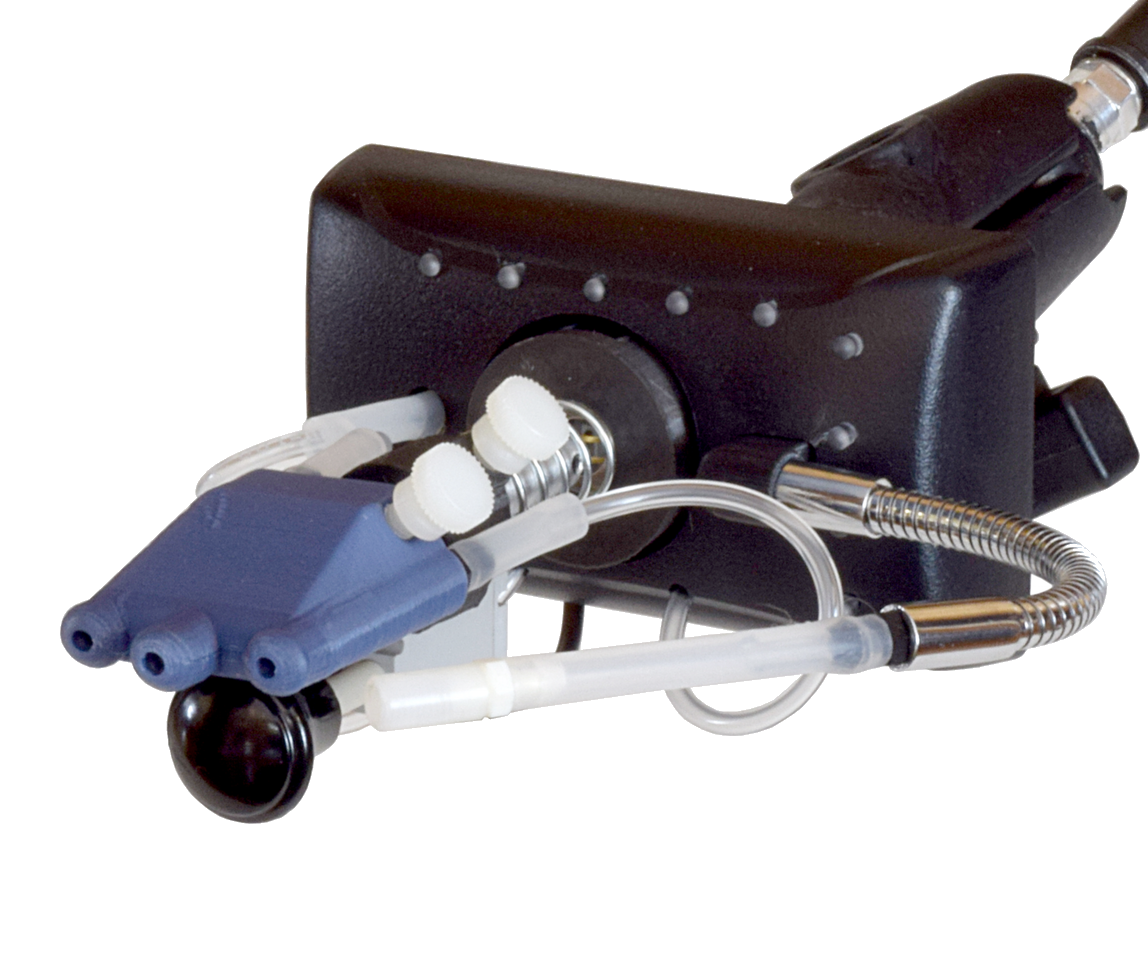We decided to give ourselves some time before our first video call meeting to thoroughly read the design briefs for each nonprofit challenge and think about ways to solve each issue. Then during the meeting, we discussed the benefits and drawbacks of each idea, debated on the feasibility of each idea given the time and resources we had available and contributed our thoughts. Below, we’ve summarized the discussion we had for the idea we decided to pursue as well as two other ideas we had.
Mouth Controlled MIDI/Game Controller/Mouse / United Cerebral Palsy Los Angeles / Shu
This device is an external computer accessory for patients with cerebral palsy and other disabled patients that struggle with fine motor controls. The device is controlled using the user’s mouth, head movement and breath. It will support multiple purposes for creative expressions and recreations. The primary functions of the device include being used as a computer mouse, gaming controller, keyboard and a MIDI controller (to play music using DAW software). Each of these functions can be switched by using predetermined breath gestures. For example, puffing into the harmonica from left to right would switch the device from the mouse function to a keyboard function. Also, this system could be expanded by adding additional devices on the sides to meet different needs of the users. For example, a musician using this system could have the main device in the front acting as the MIDI keyboard and the device on the side acting as a MIDI knob device. Such functions of what each of the puffs does will be fully customizable through an easy to use software that maps out this device visually.

I came up with this idea after watching a TED talk called Disability Technology by Jeff Paradee. He introduced a sip and puff device that was specially designed for playing video games. This device has joystick that is controlled using the mouth to act as a computer mouse and an airway that allowed users to click on elements in a GUI environment. I instantly thought that this was one form of creative expression and wondered if this concept of sip and puff could be applied to other means of artistic expressions.

(Quadstick, 2020)
After some thoughts, my mind settled on creative writing, digital arts, music composition and of course gaming. The idea was to add more airways to add additional functionalities to the device. From observing that a MIDI device and a keyboard is just an array of buttons, I drew an analogy between this idea and a harmonica. The main source of inspiration for drawing this analogy was from seeing musicians play the harmonica hands-free while playing the guitar.
(Rowland Scherman, National Archives and Records Administration, 2020)
We saw some potential problems that could get in our way while prototyping this device. The first potential issue was how we were going to detect the sip and puff from the users. We initially thought about using an array of microphones to detect the breaths; however, after more research, we found that an air pressure sensor was more appropriate for this purpose. We also thought of other means to detect the change in airflow, and we’re still in progress of deciding what kind of sensor to use. Another potential issue was how a gaming joystick and the potentiometer was going to work together mechanically. We are still thinking of ways to overcome this problem.
Despite the potential issues we saw in our way, we believed that this idea was the most suitable project given the time and resources available. This project was challenging enough for us, but we could still see the light at the end of the tunnel. It was a project we felt we could utilize both of our skills both of us had developed over the years.
Smart Text to Speech Glass / United Cerebral Palsy Los Angeles / Shu
This is an adaptive tool designed to facilitate communication for cerebral palsy patients and other patients with similar needs. I saw the need for such a device after seeing many heavy and bulky communication adaptive devices that constructed plain and boring computer-like sentences. The device is driven by a small and affordable microcontroller such as an Arduino or a Raspberry Pi Zero and uses eye-tracking technology to gather user input. The glass has a mini projector to project suggested sentences and words on to the glass, similar to Google Glass. In addition, the glass also has a microphone built in to improve sentences and words suggestions based on the context of the user’s conversation using machine learning.

Although this idea seemed feasible at first, there were a few problems that would have to be overcome. The first and the big one is how the eye-tracking system would work. None of us had seen eye-tracking that worked at such close proximity to the head. We discussed other ways of controlling the device, but we felt that without the eye-tracking feature, the device would not be as convenient. Another potential problem is the projection system. We know how such technologies work, but we could not see a realistic way to prototype this with the resources we had available. This is not to mention our lack of experience in machine learning to build the auto word and sentence suggestion feature. We thought that this idea is technologically feasible, but we would need a longer time scale and learn more advanced skills to build even the proof of concept, all of which were not realistic for us.
Digitally Controlled Exothermic Reaction Medical Fluid Warmer / Field Ready / Pato
Pato knew that part of what made medical fluid warmers expensive was the use of precise heat elements and control units. The idea for this device was to instead use an exothermic chemical reaction as the heat source for warming the fluid. Then using a special material that changes its heat conductivity as a function of the voltage applied, the heat that gets transferred to the fluid could be precisely controlled.

The biggest issue with this idea is that we couldn’t think of what this ‘special material’ could be. We found out that a research group at the Sandia National Laboratories had found a way to alter the conductivity of a material known as PZT (lead zicronate titanate) by varying electric voltage. However, this was achieved in a lab and it had never been put into a real world use. After some consultation with Pato’s friend who is a chemical engineer, we also considered controlling other aspects of the reaction. Although these methods seemed more feasible, we concluded that controlling an exothermic reaction precisely by digitally controlled means would be more costly than conventional methods. This was without even considering the difficulties associated with heat loss from the system and varying reaction times of the chemicals in a non-laboratory setting.
References
Quadstick. (2020). Original Quadstick Game Controller
Rowland Scherman, National Archives and Records Administration. (2020). Joan Baez and Bob Dylan, Civil Rights March on Washington, D.C.
https://upload.wikimedia.org/wikipedia/commons/c/c7/Joan_Baez_and_Bob_Dylan.jpg
 Shu Takahashi
Shu Takahashi
Discussions
Become a Hackaday.io Member
Create an account to leave a comment. Already have an account? Log In.